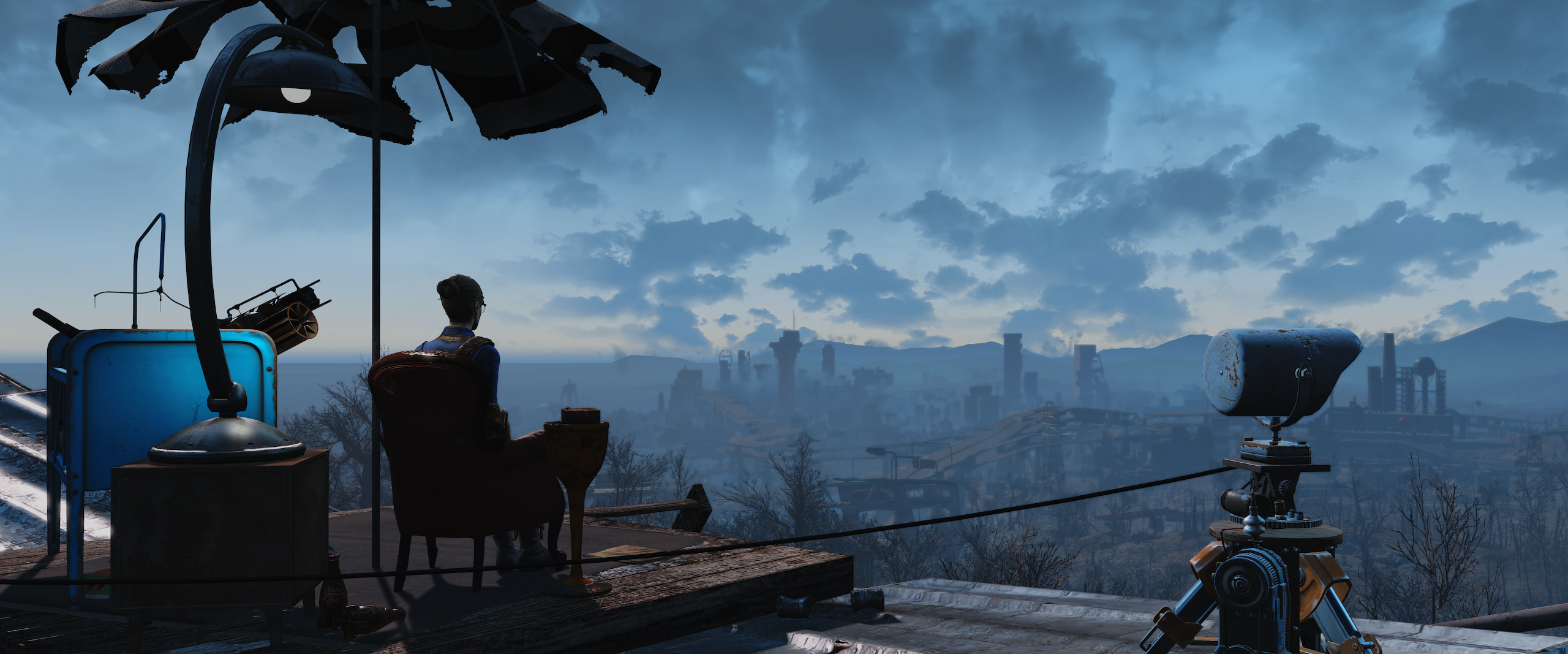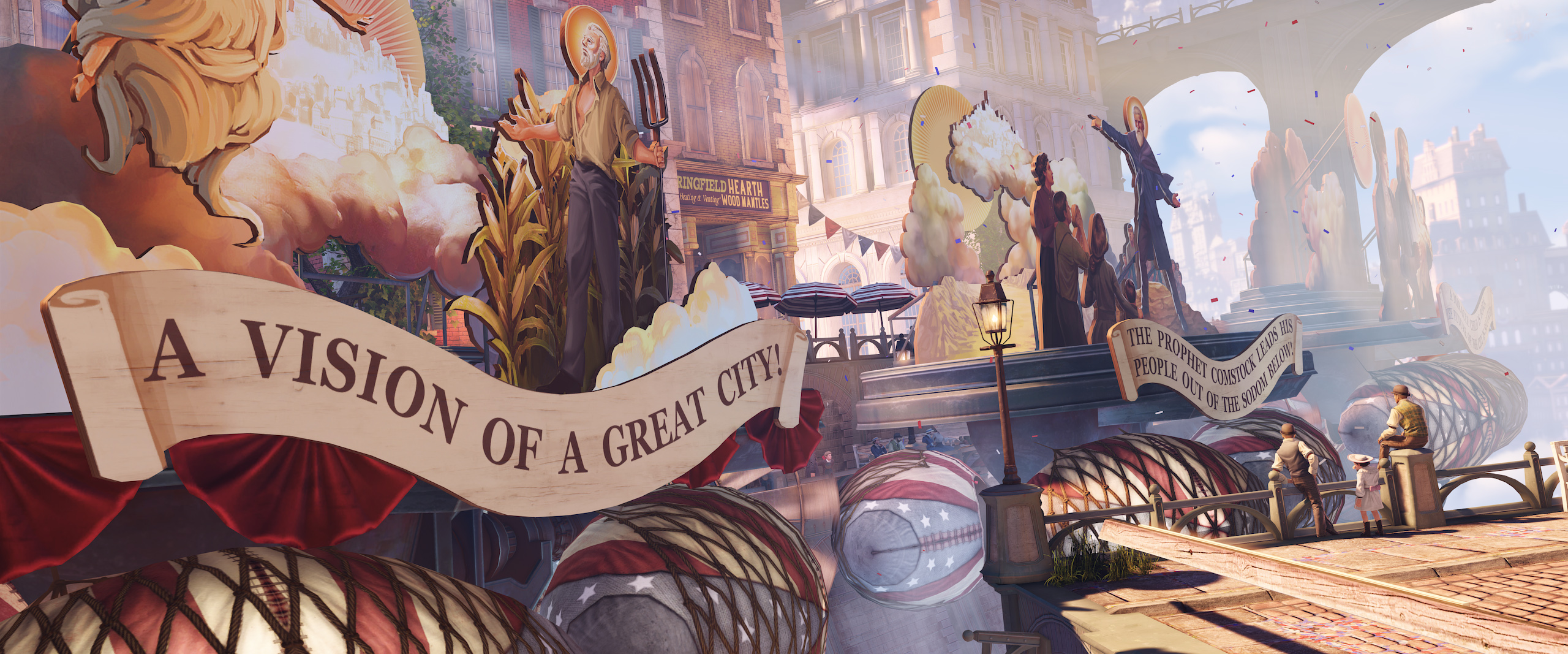
With a single click of the shutter, a photographer can preserve a meaningful moment in a timeless fashion that ends up on a wall in our home, or in a museum to be enjoyed for decades. In the world of video games, however, the craft of capturing in-game moments with screenshots has not been quite as appreciated.
In an effort to give game artists their due, industry veteran Duncan Harris launched a website dedicated to celebrating the art of gaming by displaying high-resolution screenshots he captures through a detailed, and often painstaking, process. After just one visit to Dead End Thrills not only will you likely have a new regard for the artistry behind many of your favorite games, but your opinion of screen captures as an artform just might change as well.
“I found [taking screenshots in games] more rewarding, challenging and unpredictable than the gameplay itself,” explains Harris, whose love of screenshot photography was first ignited while working as a video game journalist at Edge magazine years ago.

Dead End Thrills screenshot captured in BioShock Infinite.
“There’s more art in many games than players care to look at during gameplay, so there’s value to it,” adds Harris. “It surprised me that no one else took it seriously.”
Photoshop Not Required
Over the past seven years, Harris has used Dead End Thrills to shine a spotlight on the often-underappreciated talents and work of video game artists and developers with his stunning portfolio of in-game screenshots. Remarkably, none of Harris’ screenshots—including images from BioShock Infinite, The Elder Scrolls V: Skyrim, Fallout 4, Mass Effect 3, Mirror’s Edge, The Witcher 3: Wild Hunt and many others—are artificially touched up, or enhanced with external tools like Photoshop. The images are all directly captured in-game.
“Shots can't simply look pretty: They have to illustrate something, and ideally tell their own story,” says Harris. “It also makes you sensitive to game technology and artists, their needs, and the compromises they have to make, which helps you navigate a particular scene.”
While we respectfully disagree, Harris modestly doesn’t even really consider his work art. “I’m a servant of video games and their creators,” he tells us, “nothing more.”
Capturing a specific moment or scene within a video game often requires Harris to hack into a game’s code in order to give him enough control to take his desired shot. The bulk of his time is actually spent during this preparation, often hacking a game for many hours before he starts taking screens.
“The example I always use is Alien: Isolation, which took 80 hours to hack before I took a single shot,” he notes.
Average PCs Need Not Apply
On top of the tremendous time and effort Harris puts into setting up his shots, taking screens that can hit resolutions that exceed 6K requires some powerful PC hardware. His setup includes a PC running dual NVIDIA GeForce TITAN X GPUs and 12GB of VRAM.
“The second [GPU] comes into play for truly crushing games like a modded Skyrim, or The Witcher 3,” he says.
Harris reveals that one of his goals is to release a non-profit print book, which as he points out requires a great deal of graphical horsepower. “[With a book], you can never have enough pixels,” he says. (Take some time to browse through the features on Dead End Thrills and it’s not hard to see the print potential Harris’ work holds.)
Another key part of Harris’ process of taking beautiful screenshots is not worrying about what others think of his work. “I'm my own worst critic, and can't imagine any alternative to that,” he says. “Few things are as disastrous as letting the approval of others creep into your work, or your head.”
As for what the future holds for Harris, he plans to continue to expand Dead End Thrills into something he can dedicate all of his time to.
"The long-term goal is to make the professional and website work I do so inseparable that I'm effectively full-time at both,” Harris says. “It's taken years to even approach that, but it's close.”

“Alien: Isolation took about 80 hours to hack before shots like this came out. Later I had control over the Alien's position, too, but there's peril in that, in that you reduce the chance of serendipity. I didn't find this lighting and pose, for instance, the creature did, resulting in a shot that makes it look as trapped on the ship as its victims.”

“The circumstances surrounding a game can give a little extra power to shots, or at least impetus to do them in the first place. Few games/studios have suffered for their art quite like Blur and Bizarre Creations, and I'd wanted to do this game since it came out. Problematically, though, it applied this horrendous vaseline filter to its Photo Mode, which destroyed all the detail. A few hacks later, and I was capturing one-of-a-kind effects like this at the quality they deserve.”

“The nature of Dark Souls meant taking lots of combat and boss battle shots, yet I'm picking this one. Water effects tend to clash horribly with whatever's triggered them, while it's hard to suggest movement in clothing—especially when it's a detailed as this—without horrendous glitches. By overcoming both things here...Dark Souls shows the value of consistent art direction.”

“This was deceptively satisfying, and again might not be the most striking I got from Deus Ex: Human Revolution. Getting Jensen to crouch in such a way that he was ‘sitting’, in the right place, and at the right time having triggered the shutting of the blinds—which meant he had to start roughly where the camera's placed—took ages. It's also a hard room to capture in one image, what with the importance of ceilings in the game.”

“I feel a great pride in paying tribute to such an icon of Japanese ingenuity [in Shadow of The Colossus], as it takes some dedication to do it right. You have to hack the game while it's running in emulation on PC—and not just camera, but things like fog depth, timescale, aspect ratio and HUD. I'm dying to get back to it, as I barely got started, but the hacks are so volatile that I'm probably going to have to start from scratch.”

“I'm picking two shots here because I basically fluffed it—if I could merge them somehow then it'd be perfect. I like to tell stories with shots that aren't necessarily the game's own, or which allude to some neglected part of it. The fringes of Mass Effect have always been more interesting than the main plot, which shows just how much like a TV show it is. By hacking Unreal's post processing component and amping up the light and color beyond the window—this area looks totally different normally—you get a sense of commotion, and of 100 stories waiting to be told.”

“Every time I discover a new trick, I return to Mirror's Edge. I'm due another go now. Editing the main menu map was actually one of the first things I did screenshot-wise, back when the game came out, but only later did I have the resolution to do it justice. In this case, I also deleted the water and bottom plane—the effect looked too much like a glitch in stills—creating this wonderful impression of it being lit from underneath.”

“The joy of screenshotting Skyrim is that you never know what you'll end up with, even if you start with a fairly clear idea. Most of the best Skyrim shots are accidents, to some degree, where the myriad variables of a good ENB preset react to the game's own lighting, not to mention a load of mods, to make magic. Apply that to your own character and you get truly personal results that feel impossible to reproduce.”

“CCP asked me to produce real-time artwork for their EVE Online coffee table book, which meant composing shots from scratch using their Jessica toolset. There are dozens of particle layers and hundreds of assets at work in each one, the goal being to create a sense of scale closer to classic sci-fi art than the regular EVE session. Jessica isn't exactly built for this, so it took days to do each one. It goes to show that screenshotting at its best is as much about creation as capture.”

“Rocksteady let me use its debug build for a short while [for Batman: Arkham City]...The tools [allowed me to] do things with faces and poses you'd normally expect from cutscenes, which with these characters is a godsend.”
For more of Duncan Harris’ work celebrating the art of gaming including an index of his screenshots and screenshot-based editorial features, visit DeadEndThrills.com.
